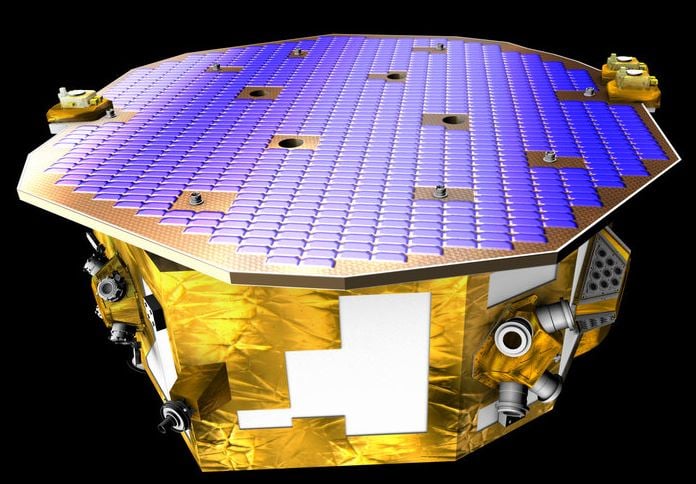Scottish scientists are sending a special kit they have built into space in an attempt to crack one of Albert Einstein’s theories – to detect low frequency gravitational waves (ripples) which can be caused by the merging of massive black holes and other events.
The theory formed part of Einstein’s Theory of General Relativity.
A rocket carrying the equipment invented by scientists at the Institute for Gravitational Research, part of the University of Glasgow, will be launched on December 2nd.
Their equipment, which is the result of ten years of work, will travel on the European Space Agency’s LISA Pathfinder spacecraft. It will be attached to a rocket which will blast off from the Guiana Space Centre in Kourou, French Guiana.
 Examining the optical bench (part of the kit) for contamination. (Image: University of Glasgow)
Examining the optical bench (part of the kit) for contamination. (Image: University of Glasgow)
Three satellites will try to detect the ripples
The researchers are sending three satellites, separated by millions of miles, into the vacuum of space in their attempt to detect the ripples.
It will take the spacecraft about eight weeks to reach its targeted orbit, approximately 1.5 million kilometres (932,000 miles) from Earth, towards the Sun.
The Institute for Gravitational Research wrote on its website:
“This will provide observations of low frequency gravitational wave sources, such as inspiraling massive black holes, extreme mass ratio inspirals and binary systems in our own galaxy.”
Team leader, Dr. Harry Ward, hopes the mission will take them a step closer to discovering direct evidence of the ripples.
 The LISA Pathfinder is a European Space Agency space probe scheduled to be launched December 2, 2015. (Image: www.esa.int)
The LISA Pathfinder is a European Space Agency space probe scheduled to be launched December 2, 2015. (Image: www.esa.int)
Dr. Ward said:
“For the last decade, we’ve been working very hard on LISA Pathfinder, which is a tremendously exciting project involving researchers from all over Europe. It’s exhilarating and a little bit frightening that we’re finally on the verge of seeing it set off on the mission it was conceived to undertake and I’ll be lucky enough to see it from the launch site in Kourou.”
“The launch of the LISA Pathfinder is a major milestone, not just for us and the European Space Agency’s other partners, but for developing further our understanding of the Universe. It’s an exciting time to be working in this field and we’re looking forward to the next stage of the exploration of the gravitational Universe.”
ESA Video – LISA Pathfinder
LISA Pathfinder’s goal is to validate the technology needed to detect gravitational waves from space. Gravitational waves will open a new door in our understanding of the Universe, and at the same time help to test Einstein’s General Theory of Relativity.
